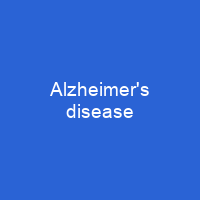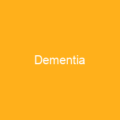Alzheimer’s disease is a chronic neurodegenerative disease that usually starts slowly and gradually worsens over time. The most common early symptom is difficulty in remembering recent events. As the disease advances, symptoms can include problems with language, disorientation, mood swings, loss of motivation, not managing self-care, and behavioural issues. The disease course is divided into four stages, with a progressive pattern of cognitive and functional impairment. Progressive deterioration, eventually leading to death, is the most common stage.
About Alzheimer’s disease in brief

Progressive deterioration, eventually leading to death, is the most common stage of the disease. It is named after German psychiatrist and pathologist Alois Alzheimer, who first described it in 1906. The disease process is associated with plaques and neurofibrillary tangles in the brain. About 70% of the risk is believed to be inherited from a person’s parents, with many genes usually involved. Other risk factors include a history of head injuries, depression, and hypertension. A probable diagnosis is based on the history of the illness and cognitive testing with medical imaging and blood tests to rule out other possible causes. A person with AD can often continue to perform many tasks independently, but may need assistance or supervision with the most demanding activities. In a small percentage, difficulties with language,. perception, or execution of movements are more prominent than memory problems. Apathy and depression can be seen at this stage. This is often found to be a transitional stage between normal ageing and dementia. The preclinical stage of Alzheimer’s disease has also been termed mild cognitive impairment (MCI) MCI can present with a variety of symptoms, and when memory loss is the predominant symptom, it is frequently seen as a prodromal stage of AD. It can also be characterised by a shrinking vocabulary and decreased word fluency, leading to a general impoverishment of oral and written language. In the early stages of AD, apathy remains as the most persistent symptom throughout the course of the Disease.
You want to know more about Alzheimer’s disease?
This page is based on the article Alzheimer’s disease published in Wikipedia (as of Dec. 03, 2020) and was automatically summarized using artificial intelligence.







